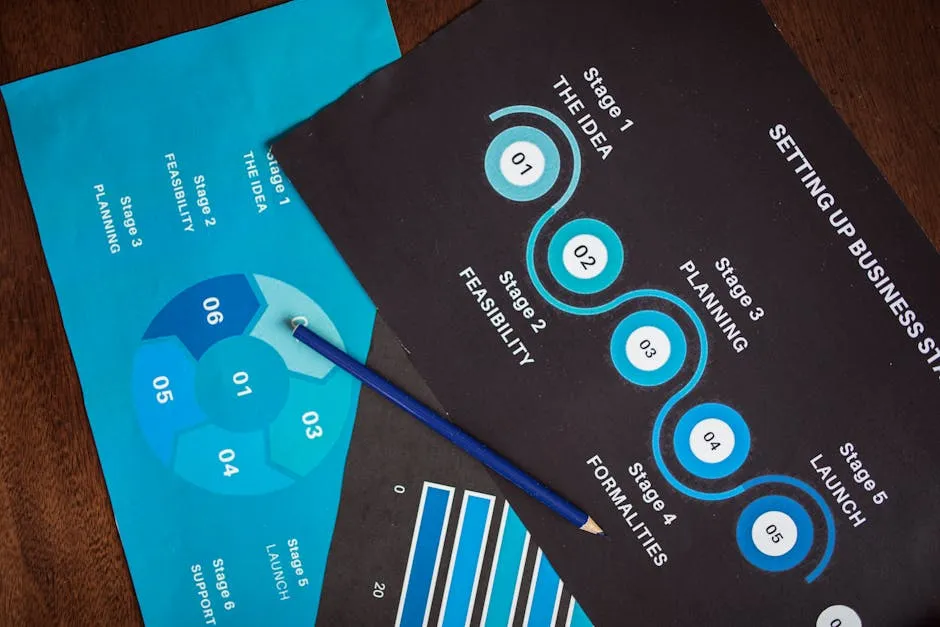Introduction
Statistical studies are the backbone of informed decision-making. They provide insights into patterns, trends, and relationships within data that can significantly impact various fields. From health to business, the results derived from these studies help shape policies, research, and strategies.
Understanding the different types of statistical studies is essential. Each type serves a unique purpose, allowing researchers to address specific questions. This guide will introduce you to the major categories and their applications. Whether you’re a budding statistician or a curious reader, this overview will pique your interest in the fascinating world of statistics.
Imagine trying to make a choice about a new medication without knowing its effects. That’s where statistical studies come in! They gather data that can sway decisions, providing evidence that can either support or challenge existing beliefs. So, buckle up and prepare to uncover the types of statistical studies and their real-world applications.

Types of Statistical Studies Overview
Statistical studies are systematic investigations that analyze data to answer specific questions. The process begins with formulating a relevant question, followed by collecting data, and then analyzing and interpreting the results. The objective is to derive meaningful conclusions from the data collected.
There are two main categories of statistical studies: observational studies and experiments. Observational studies involve observing and measuring variables without manipulation. They help identify correlations and patterns within data, but they do not establish cause-and-effect relationships.
Experiments, on the other hand, involve intentionally manipulating one or more variables to observe the effect on another variable. This method is crucial for establishing causal relationships. Selecting the appropriate type of study is vital to effectively addressing your research questions. It determines the validity and reliability of the findings, ultimately guiding conclusions and future actions.
Understanding these distinctions is not just an academic exercise. It equips researchers, businesses, and policymakers with the knowledge to make informed decisions based on empirical evidence. So, whether you’re delving into health research or analyzing consumer behavior, grasping the types of statistical studies is key to unlocking valuable insights.

Observational Studies
Definition and Purpose
Observational studies are research methods where researchers observe and measure variables without manipulating them. The primary purpose? To understand behaviors, trends, and correlations among different factors. Imagine a scientist peering through a microscope, noting everything but touching nothing. That’s the essence of observational studies.
One major advantage of observational studies is their ability to gather real-world data. They can provide insights into complex phenomena without the ethical dilemmas involved in manipulating variables. For instance, studying the effects of smoking on health over decades can yield invaluable results. However, these studies come with a notable limitation: they cannot establish causation. Just because two variables seem related, it doesn’t mean one causes the other. Picture a classic example: ice cream sales and drowning incidents. Both rise in summer, but eating ice cream doesn’t cause drowning, right? This phenomenon illustrates the importance of caution when interpreting results from observational studies.

If you’re eager to dive deeper into the world of statistics, you might want to check out Statistics for Dummies. This book simplifies complex concepts and makes statistics feel less intimidating, perfect for anyone looking to get a solid foundation.
Types of Observational Studies
- Cross-Sectional Studies: These studies capture a snapshot in time. Researchers gather data from a specific population at a single point, like taking a photo that freezes a moment. For example, a cross-sectional study might survey college students on their eating habits during finals week. This type of study is useful for identifying patterns and associations but doesn’t track changes over time.
- Longitudinal Studies: Unlike their cross-sectional counterparts, longitudinal studies follow the same group over an extended period. This method allows researchers to observe changes and developments. Think of it as filming a documentary instead of snapping a photo. A classic example is tracking the health of a group of smokers versus non-smokers over several years. This approach provides insights into how behaviors influence outcomes over time.
- Case-Control Studies: These studies compare individuals with a certain condition (cases) to those without (controls). They are often used in health-related research to identify factors that may contribute to specific health conditions. For instance, in a case-control study on lung cancer, researchers might compare the smoking habits of lung cancer patients with those of healthy individuals. This method helps identify risk factors but doesn’t establish direct causation.

Examples of Observational Studies
Consider a study investigating the correlation between physical activity and mental health. Researchers might observe different groups—some who exercise regularly and others who do not. They could measure various mental health indicators, like levels of anxiety and depression. This observational study could reveal a pattern: individuals who exercise report better mental health. However, while the correlation is clear, it doesn’t prove that exercise directly improves mental health.
Observational data can spark new hypotheses for further experimentation. For example, after observing that students who study in groups perform better, researchers might design an experiment to test whether group study sessions indeed enhance learning outcomes.
In conclusion, observational studies are powerful tools for understanding complex relationships in real-world settings. They allow researchers to gather valuable insights without manipulation. However, it’s crucial to approach the findings with a critical eye. While these studies can point to correlations, they cannot definitively establish causation. So, the next time you see a study with compelling results, remember to check if it’s observational—and keep your detective hat on!

Experimental Studies
Definition and Purpose
Experimental studies are the superheroes of statistical research! Their primary goal is to establish cause-and-effect relationships. Think of them as the ultimate quest for truth in data. Researchers manipulate one or more variables, observing the effects on others. This is the bread and butter of scientific inquiry.
Randomization is a key ingredient in experiments. It helps eliminate bias, ensuring that participants are assigned to groups purely by chance. This way, every participant has an equal likelihood of being selected. The importance of control groups can’t be overstated either! These groups serve as a benchmark, allowing researchers to compare results against a group that doesn’t receive the experimental treatment.
Imagine testing a new coffee blend. One group sips the fancy brew, while the control group sticks to regular coffee. By comparing their alertness levels afterward, researchers can see if the new blend truly gives a caffeine kick or if it’s just a placebo effect.

Types of Experiments
- Controlled Experiments: These are the gold standard. Researchers create a controlled environment to test hypotheses. They manipulate one variable while keeping everything else constant. This design allows for clear conclusions. For example, if scientists want to test the effectiveness of a new fertilizer, they might grow two sets of plants under identical conditions—one with the fertilizer and one without. The results show whether the fertilizer makes a difference.
- Field Experiments: Unlike controlled experiments, field experiments take place in real-world settings. They’re a bit messier but offer more practical insights. Imagine a social scientist studying the impact of a new teaching method. Instead of a sterile lab, they visit actual classrooms. They compare students taught using the new method with those using traditional techniques. This approach captures the nuances of real-life situations, providing valuable context.
- Natural Experiments: Sometimes, researchers can’t manipulate variables directly. Enter natural experiments! These occur when a natural event creates conditions for observation. For example, after a new law is enacted, researchers might compare outcomes in communities before and after its implementation. This method leverages existing circumstances to study effects without direct intervention.

Examples of Experimental Studies
A classic example of an experimental study is a clinical trial for a new medication. Picture this: researchers recruit participants who need treatment for a specific condition. They randomly assign half to receive the new drug and the other half to receive a placebo. Over a few months, they meticulously track health outcomes.
The findings from such trials are crucial. If the drug shows significant improvement compared to the placebo group, it’s a strong indication of its effectiveness. However, ethical considerations loom large. Researchers must ensure informed consent, meaning participants understand the study’s purpose, risks, and benefits. They must also minimize harm, ensuring that participation doesn’t jeopardize anyone’s health.
In summary, experimental studies are powerful tools for uncovering causal relationships. Through controlled environments, field settings, or natural occurrences, researchers can draw meaningful conclusions. While ethical standards guide these studies, the insights they provide can drive innovations in medicine, education, and beyond. So, the next time you hear about a new treatment or intervention, remember the rigorous experiments that back it up!

Key Differences Between Observational Studies and Experiments
When it comes to research, choosing the right study type is crucial. Let’s break down the differences between observational studies and experiments in a neat table format.
| Aspect | Observational Studies | Experiments |
|---|---|---|
| Goal | Identify associations between variables. | Establish cause-and-effect relationships. |
| Design | Researchers observe without manipulation. | Researchers manipulate one or more variables. |
| Data Collection | Natural settings, no interference. | Controlled environments to eliminate bias. |
| Causation | Cannot determine causation. | Can establish causation through manipulation. |
| Flexibility | More flexible; can adapt to real-world scenarios. | Less flexible; requires structured protocols. |
| Ethical Considerations | Fewer ethical concerns in most cases. | Must ensure participant safety and informed consent. |

Choosing between these two types of studies hinges on your research objectives. If you’re looking to explore relationships without interference, observational studies are your best bet. They shine in real-world scenarios, helping researchers gather insights without the ethical dilemmas involved in manipulating variables.
However, if your mission is to establish causation, experiments are the way to go. They allow you to control variables and draw powerful conclusions about cause-and-effect relationships. Consider a clinical trial testing a new drug. Here, researchers can confidently assert that the drug’s efficacy results from their controlled manipulation, rather than mere correlation.
In summary, the choice between observational studies and experiments depends on your research goals. Observational studies are great for understanding trends and relationships, while experiments are essential for proving causation. Choose wisely, and your research will be on the right path!

Conclusion
Understanding the different types of statistical studies is essential for effective research and decision-making. Throughout this article, we explored observational studies and experiments, highlighting their distinct characteristics, advantages, and limitations.
Observational studies provide valuable insights by identifying patterns and associations within real-world contexts. However, they fall short in establishing causation. On the other hand, experiments are the go-to method for proving cause-and-effect relationships, thanks to their controlled environments and manipulation of variables.
It’s vital for researchers, businesses, and policymakers to grasp these differences. This knowledge not only guides the design of studies but also informs the interpretation of results. By understanding which study type aligns with your research questions, you can draw more accurate conclusions and make better decisions. Additionally, for more insights on effective data analysis, check out our article on tips for effective data analysis in economics and statistics.
And if you want to enhance your statistical skills further, consider adding Naked Statistics: Stripping the Dread from the Data to your reading list. This book will help you understand the beauty of statistics without the confusion!
So, the next time you’re conducting research, consider the type of study that best suits your objectives. Whether you’re navigating the complexities of social science, health, or business, applying this understanding will enhance your analytical skills and lead to more informed outcomes. Embrace the power of statistical studies and let data guide you to success!

FAQs
What are the main types of statistical studies?
Statistical studies primarily fall into two categories: observational studies and experimental studies. Observational studies involve researchers observing and measuring variables without any manipulation. These studies aim to identify patterns and relationships among different factors. For example, a researcher might study the eating habits of school children by simply observing their lunch choices without influencing their decisions. Experimental studies, on the other hand, involve deliberate manipulation of one or more variables to observe the effect on another variable. This method is essential for establishing cause-and-effect relationships. For instance, in a clinical trial, participants may be randomly assigned to receive a new medication or a placebo to see how the treatment affects their health outcomes. Each type serves its unique purpose in research, guiding the analysis based on the research question.
Can observational studies establish causation?
Observational studies are like a puzzle; they can show connections but can’t definitively prove causation. Since researchers don’t manipulate variables, they can only identify correlations. For instance, if a study finds a link between exercise and improved mental health, it doesn’t mean exercise causes better mental health. Other factors could play a role, like diet or genetics. Researchers can make inferences based on patterns observed but should be cautious when interpreting results. It’s essential to consider confounding variables—those pesky factors that can skew results. While observational studies can lead to hypotheses, further experiments are necessary to establish causation robustly.
What are the ethical considerations in experimental studies?
Experimental studies often involve ethical considerations to protect participants. Key principles include: Informed Consent: Participants must understand the study’s purpose, risks, and benefits before agreeing to participate. This ensures they are making an informed decision. Minimizing Harm: Researchers must take steps to ensure that participation does not lead to physical or psychological harm. This might include careful monitoring of participants or providing support. Confidentiality: Researchers must protect participants’ personal information, ensuring that it remains confidential throughout the study. These ethical principles help ensure that participants are treated with respect and that the research is conducted responsibly.
How to choose the right type of study for research?
Choosing the right type of statistical study can feel like picking the right outfit for a job interview—it’s all about fitting the occasion! Here are some tips to guide your decision: 1. Define Your Research Question: Start by clearly outlining what you want to learn. Are you looking to establish a cause-and-effect relationship, or are you interested in exploring associations? 2. Consider Available Data: If you have existing data, observational studies may be a good fit. If you’re starting from scratch, an experimental design might be more suitable. 3. Evaluate Ethical Implications: If your study involves manipulating variables, ensure you can conduct it ethically. If not, observational studies can still provide valuable insights. 4. Assess Feasibility: Consider your resources and time. Experiments can be more complex and resource-intensive compared to observational studies, so weigh your options carefully. By aligning your research questions with the appropriate study type, you can enhance the validity of your findings and make more informed decisions down the line.
Please let us know what you think about our content by leaving a comment down below!
Thank you for reading till here 🙂
For more insights on the foundations of statistical learning, check out our article on an introduction to statistical learning with Python.
Additionally, if you’re keen on mastering data science, you can’t miss out on The Data Science Handbook. This book will arm you with essential concepts and tools to navigate the data-driven world!
All images from Pexels




